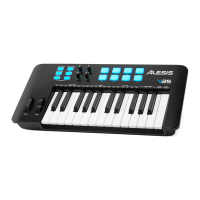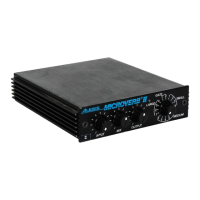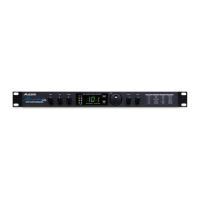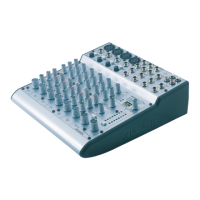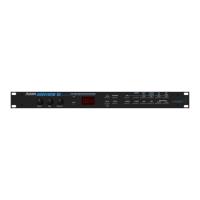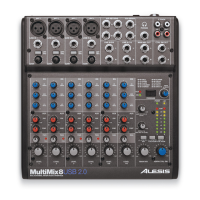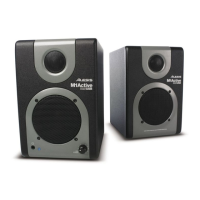Chapter 1
2 ALESIS ML-9600 REFERENCE MANUAL
1.3 AC POWER HOOKUP
1 Make sure the MasterLink is turned off. It’s good practice not to turn on the MasterLink until all
other cables are hooked up.
2 Before plugging in to AC power, note that the MasterLink’s IEC-spec AC cord (do not substitute
any other AC cord) must feed a 3-pin outlet, where the third, round pin connects to ground. The
ground connection is an important safety feature designed to keep the chassis of electronic devices
at ground potential. Unfortunately, the presence of a third ground pin does not always indicate a
properly grounded outlet; check this with an AC line tester. If the outlet is not grounded, consult
with a licensed electrician.
3 Plug the power cord’s female end into the MasterLink’s power input socket, and the male (plug)
end into any AC power source from 90 to 250 volts, 50 or 60 Hz.
Your MasterLink includes the correct power cord for your country or local area. When using a
MasterLink abroad , use only the following alternative power cords approved for use with ML-9600:
• For 90-120 VAC 50/60 Hz operation in the US, Canada and/or Japan, use Alesis UL/CSA
power cord #7-41-0001.
• For 240 VAC 50 Hz operation in England, use Alesis UK power cord #7-41-0004.
• For 220 VAC 50 Hz operation in Europe and Scandinavia, use Alesis EU power cord #7-41-
0002.
• For 240 VAC 50 Hz operation in Australia, use Alesis AS power cord #7-41-0003.
Alesis is not responsible for problems caused by using the MasterLink or any associated
equipment with improper AC wiring.
1.4 LINE CONDITIONERS AND PROTECTORS
Although the MasterLink tolerates typical voltage variations, the AC line voltage may contain spikes or
transients that can possibly stress your equipment and, over time, cause a failure. There are three main
ways to protect against this, listed in ascending order of cost and complexity:
• Line spike/surge protectors. Relatively inexpensive, these help protect against strong surges and
spikes (they usually need to be replaced after enduring an extremely strong spike).
• Line filters. These generally combine spike/surge protection with filters that remove some line
noise (dimmer hash, transients from other appliances, etc.).
• Uninterruptible power supply (UPS). This is the best option. A UPS provides power even if the
AC power line fails completely. Intended for computer applications, a UPS allows an orderly
shutdown in the event of a power outage. Furthermore, the isolation it provides from the power
line minimizes all forms of interference - spikes, noise, etc.
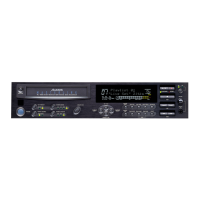
